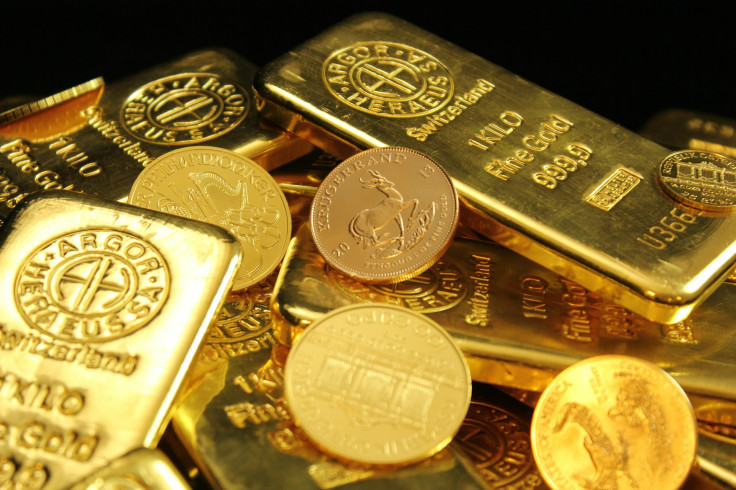Panic on 47th Street: Gold Buyers in Tears After Record Prices Suddenly Plunge
Panic on 47th Street as the record gold price plunges, leaving recent buyers in tears. Find out why it crashed.

The elation of a lifetime investment turned to anguish overnight on New York's famed 47th Street. Just days after buying gold at its historic peak, small-time investors who had poured their savings into the precious metal were left reeling as prices took a sudden, brutal plunge. The panic in the city's Diamond District mirrored scenes across the globe, from Sydney to London, as the gold rush came to a screeching halt.
For weeks, the scenes in central Sydney have looked like something from a bygone era. Every morning before 9 a.m., a queue of hundreds of people snakes across Martin Place, all waiting for hours with a single purpose: to buy gold. The demand has been so relentless that the ABC Bullion store has had to extend its trading hours and hire five extra staff just to keep up.
This modern-day gold rush, which has seen about 1,000 people a day flood the store, is the human face of a ferocious global rally that pushed the precious metal to historic highs. But after weeks of frantic buying, the record-breaking surge is finally showing signs of cooling off, with gold recently suffering its biggest single-day slump in four years on Tuesday, October 21, 2025.
This has left both seasoned traders and everyday investors asking the same question: is this a temporary dip, or is the bubble about to burst?
A 'Gold Rush' Fueled by a Soaring Gold Price
The frenzy in Sydney has been driven by a meteoric rise in the gold price, which leapt from $3,400 an ounce in April to a record peak of $4,381.52 on Monday. 'It's a bit of a gold rush', says Jordan Eliseo, the general manager of ABC Bullion. 'They're reading about it on the news and they're going, 'Actually, I want some [gold].''
The motivations for buying are varied. Some, like Prakas, a Nepali Australian man, were simply trying to buy a small amount for the Hindu festival of Diwali, a yearly tradition made almost impossible by the queues and surging prices.
Others, like Avtar, a nurse from Sydney's northern suburbs, are seeing incredible returns. He took $78,000 out of his retirement savings in April and bought gold; that investment is now worth nearly $112,000. Still, even he is wary of the current market. 'Prices have gone scary', he says. 'If you invest now, will it crash, or will it still keep on growing?'
Why the Record-Breaking Gold Price Is Now Cooling Off
That question is now echoing through global markets. After hitting a fresh peak of $4,381.52 an ounce on Monday, bullion has fallen by as much as 3.8 per cent. According to market analysts, several factors are contributing to this correction.
For weeks, technical indicators like the relative strength index have shown that gold is well into 'overbought' territory, suggesting a pullback was overdue. A strengthening US dollar has also made the metal more expensive for most international buyers.
Furthermore, haven demand has cooled slightly as US President Donald Trump and China's Xi Jinping are set to meet next week to discuss trade, and a seasonal buying spree in India has ended.
'In the last couple of trading sessions traders have increasingly been looking over their shoulders, as concerns about a correction and consolidation have arisen', said Ole Hansen, a commodities strategist at Saxo Bank AS.
Uncertainty and the Future of the Gold Price
Adding to the volatility is a US government shutdown, which has left traders without a key report from the Commodity Futures Trading Commission that shows how major investors are positioned. 'The absence of positioning data comes at a delicate time, with a potential build-up in speculative long exposure... making [gold] more vulnerable to correction', Hansen added.
Opinions on the future are now sharply divided. The Royal Bank of Canada has upgraded its forecast, suggesting gold could potentially hit $5,000 an ounce by early 2026, driven by global uncertainty and investors moving out of shares and currencies. But some economists see the frantic retail buying as a warning sign.
Shane Oliver, AMP's chief economist, has been warning for two weeks that the exploding queues could be a sign the market is becoming speculative and vulnerable. 'The risk of a pullback is rising,' Oliver says.
For the thousands of everyday people who queued for hours, from the storefronts of Sydney to the dealers on 47th Street, these market forces are now a harsh reality. Many who bought at the peak, hoping for continued gains, are now facing significant losses on paper, turning their dreams of a safe haven into a source of anxiety and regret.
© Copyright IBTimes 2025. All rights reserved.






















